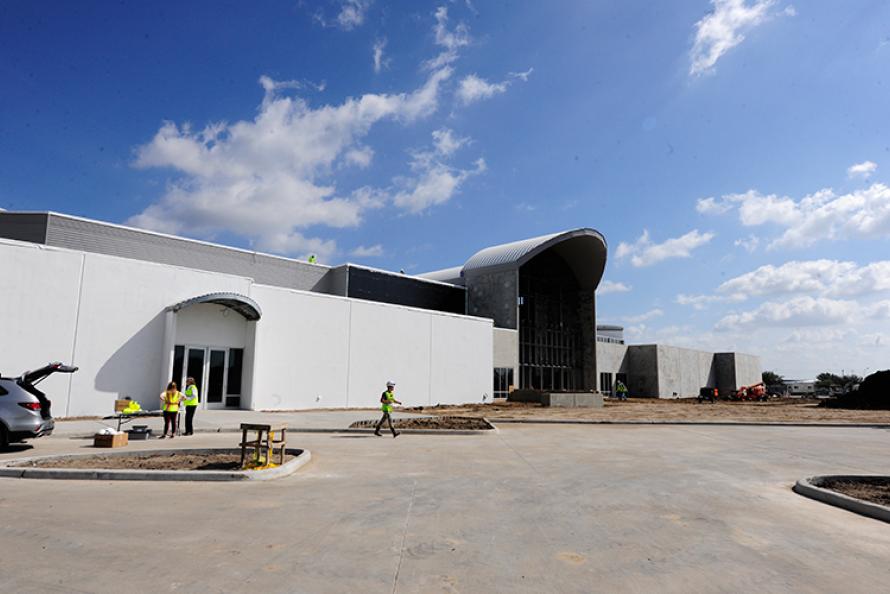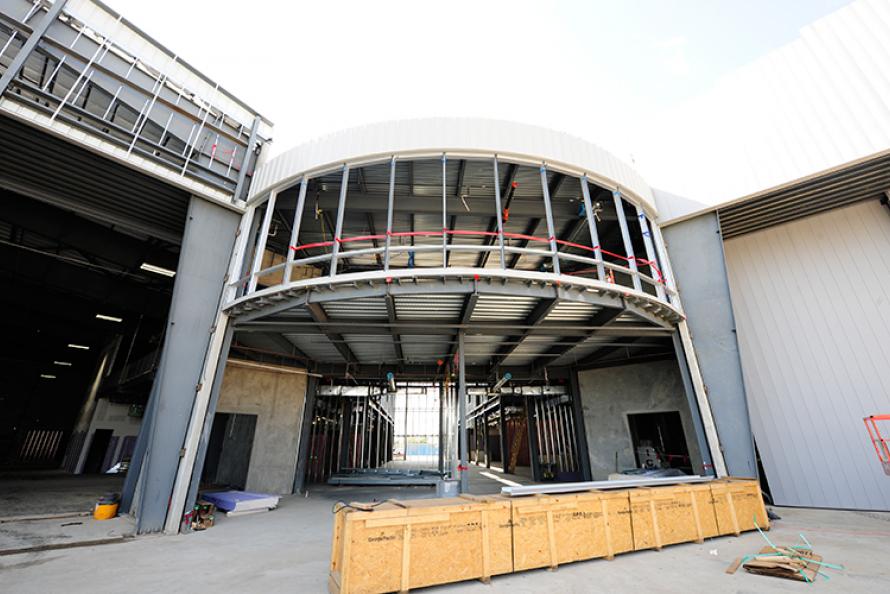The Lone Star Flight Museum recently named four new members to its Texas Aviation Hall of Fame and gave a hard hat tour of its new $ 38 million 130,000 square-foot facility set to Labor Day weekend.
The new museum located at Ellington Airport will house the Hall of Fame, the museum's aviation history displays, and a slate of new interactive exhibits that explore the science of flight.
The new hall-of-famers are:
President George W. Bush Bush trained as an Air Force pilot in 1968 and '69 at Moody Air Force Base in Georgia, then was stationed at Houston's Ellington Field, where he flew F-102 fighters with the 111th Fighter Interceptor Squadron. He went on to become governor of Texas and, in 2001, president of the United States. He joins his father, George H.W. Bush, and Dwight D. Eisenhower in the hall of fame.
Major General Benjamin D. Foulois (1879-1967) Foulois learned to fly in 1910 when he was stationed at Fort Sam Houston in San Antonio, then established one of the first military airfields nearby, at what is now Kelly Field Annex. He helped evaluate the first military planes that were purchased from the Wright brothers, and in 1911 he was the first to fly 100 miles nonstop - one of several firsts in his career. Foulois was Chief of the Air Service during World War I and retired as a Major General in 1935.
Albert W. "Al" Mooney (1906-1986) A self-taught aircraft designer, Mooney founded Kerrville's Mooney Aircraft Company in 1929. The company exists today, and current Mooney aircraft, famous for their speed, owe a lot to Mooney's original designs. Later, as chief engineer for the Alexander Company, he designed the Bullet, a high-speed aircraft with patented retractable landing gear. Mooney ended his career at Lockheed, where his designs eventually became the Lockheed JetStar, a business jet.
The 111th Aero Squadron Now known as the 111th Reconnaissance Squadron, this is a unit of the Texas Air National Guard 147th Reconnaissance Wing based at Ellington Field. It was established in 1917 at San Antonio's Kelly Field, then reformed in 1923 as the 111th Observation Squadron. During World War II, the unit went to North Africa, Sicily and France as the 111th Tactical Reconnaissance Squadron, then was deployed to Japan during the Korean War. After the Korean War, the unit returned to Ellington Field as the 111th Fighter Interceptor Squadron. But its glory days kept coming: After Operation Iraqi Freedom, the unit was renamed the 111th Reconnaissance Squadron. The second oldest squadron in the U.S. Air Force, it celebrates its centennial this year.
Established in 1977, the Texas Aviation Hall of Fame honors famous aviators who are Texans and famous Texans who are aviators. Past recipients include Howard Hughes, astronauts Alan Bean and Gene Cernan, Lloyd Bentsen, Tom Landry and the Doolittle Raiders from World War II. This year's four hall-of-famers were selected from more than 60 nominees by a panel of aviation historians and experts. They will be inducted May 20 at the museum's "Taking Flight" gala.
For more information, please visit http://www.lonestarflight.org.


